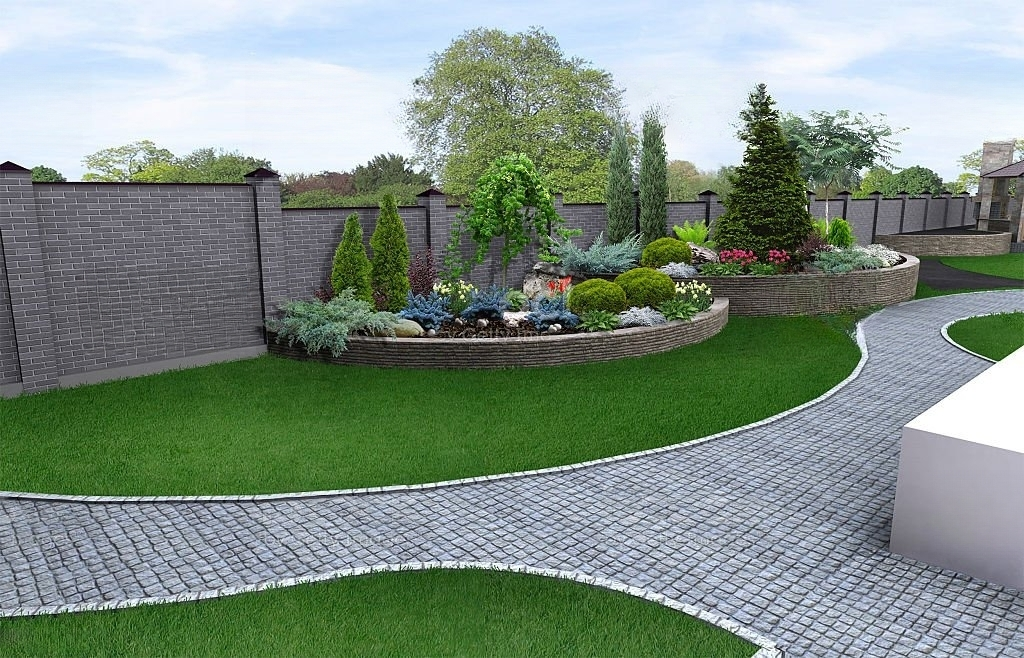Retaining walls are an essential feature for landscaping projects as they help to prevent soil erosion and provide support to structures on sloped terrains. If you’re looking to build a retaining wall, you may be wondering about the cost and design options available. In this blog, we’ll explore the different factors that influence the cost of a retaining wall and discuss the popular design options for block and concrete retaining walls.
The cost of a retaining wall installation service can vary depending on several factors. The size of the wall, the materials used, and the complexity of the project are all factors that can impact the cost. Additionally, labor costs and the location of the project may also influence the total cost.
When it comes to Build Retaining Walls design, there are several options available. The most popular block options include concrete blocks, natural stone, and bricks. Concrete blocks are the most common and cost-effective option, while natural stone and bricks offer a more decorative look but can be more expensive.
Concrete retaining wall design also has several options, including poured concrete, precast concrete, and concrete blocks. Poured concrete is a popular option for large retaining walls as it can be molded to fit any shape. Precast concrete and concrete blocks offer a cost-effective and easy-to-install option.
The cost of a retaining wall installation service can vary depending on several factors. Block and concrete retaining wall design options offer different cost and aesthetic choices. It is essential to research and plan before deciding on the best retaining wall for your project.
How To Build A Cinder Block Retaining Wall?
When it comes to creating a sturdy and reliable retaining wall, a cinder block is a popular material choice. Not only is it durable and cost-effective, but it’s also easy to work with, making it an ideal option for DIY enthusiasts or those looking for a build retaining wall installation service.
Before beginning your project, it’s important to plan and design your retaining wall. Consider factors such as the height and length of the wall, the slope of the land, and any drainage or soil issues that may impact its stability.
Once you’ve determined the design and build retaining walls, it’s time to gather materials and tools. In addition to cinder blocks, you’ll need mortar, gravel, and rebar for reinforcement. Tools such as a level, trowel, and rubber mallet will also come in handy during the installation process.
Begin by preparing the base for your retaining wall, ensuring that it’s level and compacted. Then, begin laying your cinder blocks, ensuring they’re level and plumb as you go. As you build up each row, fill the gaps with mortar and use rebar for reinforcement.
While the process of building a cinder block retaining wall may seem daunting, with careful planning and attention to detail, it’s a project that can be tackled by DIY enthusiasts or by hiring a professional retaining wall installation service. By utilizing the strength and durability of cinder blocks, you can create a retaining wall that will not only enhance the aesthetics of your property but also provide long-lasting stability and support.
How To Build Retaining Walls?
Retaining walls are an essential component of landscaping that helps to prevent soil erosion and stabilize sloping terrain. If you are planning to build a retaining wall, there are various factors you need to consider to ensure the stability and durability of the wall. We will discuss the best practices to build retaining walls that can withstand the test of time.
Firstly, you need to determine the location and purpose of your retaining wall. Is it going to be a decorative feature or a functional wall to hold back soil? This will help you to choose the right materials and design for your retaining wall. For instance, if you are looking for a durable option, a concrete retaining wall design is ideal, whereas a block retaining wall design is a great choice for a decorative feature.
Once you have chosen the type of retaining wall, the next step is to prepare the site. This involves digging a trench for the foundation and ensuring that the soil is compacted and level. This will provide a solid base for your retaining wall.
After the site is prepared, the next step is to install the retaining wall. You can either opt to DIY or seek the services of a retaining wall installation service. It’s crucial to ensure that the installation is done correctly to prevent any potential issues in the future.
Building a retaining wall requires careful planning, preparation, and execution to ensure that it serves its intended purpose effectively. By following the best practices outlined in this guide, you can build a functional and beautiful retaining wall that will stand the test of time.
How To Cut Retaining Wall Blocks?
Retaining walls serve a vital function in landscaping and are essential in preventing soil erosion and land movement. They also add an aesthetic appeal to your outdoor space. If you’re planning on installing a block or concrete retaining wall, you must know how to cut retaining wall blocks.
Before we dive into the details, it’s important to understand the basics of retaining wall installation service and block retaining wall design. A retaining wall is a structure designed to hold back soil, rocks, or water and prevent erosion. Block retaining walls are made from precast concrete blocks that are interlocked and stacked to create a sturdy wall. On the other hand, concrete retaining walls are made from poured concrete that is reinforced with steel.
To cut retaining wall blocks, you’ll need a few essential tools like a chisel, hammer, and saw. It’s important to measure the area accurately before cutting the blocks to ensure a perfect fit. You’ll also need to consider the type of block and the desired shape.
When cutting retaining wall blocks, it’s crucial to prioritize safety. Wear appropriate protective gear like gloves, goggles, and earplugs. Take necessary precautions and follow the manufacturer’s instructions to avoid injury.
Conclusion:
Cutting retaining wall blocks is a crucial step in a block retaining wall design and concrete retaining wall design. With the right tools, measurements, and safety precautions, you can create a beautiful and sturdy retaining wall for your outdoor space.





